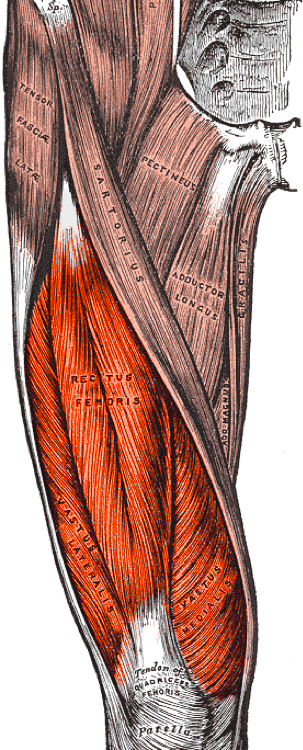Difference between revisions of "ANTERIOR COMPARTMENT OF THIGH-RECTUS FEMORIS"
From NeuroRehab.wiki
(Imported from text file) |
(Imported from text file) |
||
| Line 1: | Line 1: | ||
[[Summary Article|<h5>'''SUMMARY'''</h5>]] | [[Summary Article|<h5>'''SUMMARY'''</h5>]] | ||
<br/>1. O: bipennate muscles that arises by 2 heads. S<i>traight head - </i>anterior inferior iliac spine. <i>Reflected head - </i>above the acetabulum. | <br/>1. O: bipennate muscles that arises by 2 heads. S<i>traight head - </i>anterior inferior iliac spine. <i>Reflected head - </i>above the acetabulum. 2. I: base of patella & tibial tuberosity via patella tendon. | ||
<br/>3. NS: posterior branch of femoral n. | <br/>3. NS: posterior branch of femoral n. | ||
<br/>4. A: extends the knee. | <br/>4. A: extends the knee. | ||
Revision as of 12:45, 27 December 2022
SUMMARY
1. O: bipennate muscles that arises by 2 heads. Straight head - anterior inferior iliac spine. Reflected head - above the acetabulum. 2. I: base of patella & tibial tuberosity via patella tendon.
3. NS: posterior branch of femoral n.
4. A: extends the knee.

Image: Gray, Henry. Anatomy of the Human Body. Philadelphia: Lea & Febiger, 1918; Bartleby.com, 2000. www.bartleby.com/107/ [Accessed 14 Apr. 2019].
Reference(s)
R.M.H McMinn (1998). Last’s anatomy: regional and applied. Edinburgh: Churchill Livingstone.
Gray, H., Carter, H.V. and Davidson, G. (2017). Gray’s anatomy. London: Arcturus.